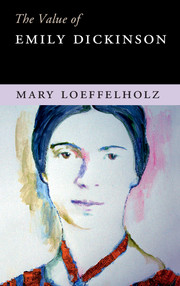1 - The life of Dickinson's writing
Published online by Cambridge University Press: 05 June 2016
Summary
In The Life of the Poet (1981), Lawrence Lipking proposes that “the image of a fulfilled poetic destiny – the life of the poet – continues to lure both poet and reader.” The value of individual poems to both poets and readers, he argues, stems in part from their relationship to “the cumulative purpose – the career or destiny – that unites them.” The high value that readers set on the life of the poet reflects our own human investments in “self-making,” as Edward Said calls it, which is not a prerogative reserved for poets alone; “all of us, by virtue of the simple fact of being conscious, are involved in constantly thinking about and making something of our lives.” The beginnings of poetic careers, according to Helen Vendler, echo and find artistic shape for the early stages of our common human self-making: “To the young writer, the search for a style is inexpressibly urgent; it parallels, on the aesthetic plane, the individual's psychological search for identity – that is, for an authentic self-hood and a fitting means for its unfolding.” Poets come into their own, as Lipking observes, in the process of learning to re-read and re-write their own earlier work, “in constant recoil from [their] earlier themes.” The “last great problematic” of artistic careers, Said proposes, is that of human life at large – “the last or late period of life, the decay of the body, the onset of ill health” – in response to which some artists take on, “near the end of their lives … a new idiom, what I shall be calling a late style”; great instances of late style may register “the artist's mature subjectivity, stripped of hubris and pomposity, unashamed either of its fallibility or of the modest assurance it has gained as a result of age and exile.”
For much of the twentieth century, and by many critical readers, Emily Dickinson's writing was thought not to have a life, in Lipking's strong sense of “a fulfilled poetic destiny” accomplished over time. What took its place were variations on “the Myth” of Amherst – in the phrase that village gossip began to use about Dickinson during her lifetime: the story of a woman who garbed herself in white, retreated to her father's house, and churned out hundreds of similar poems in the wake of a mysterious romantic rejection.
- Type
- Chapter
- Information
- The Value of Emily Dickinson , pp. 11 - 36Publisher: Cambridge University PressPrint publication year: 2016

